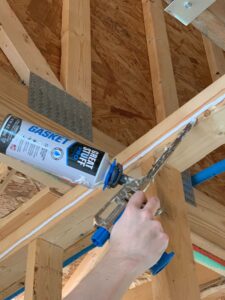Spring Has Sprung!

As the vibrant colors of spring emerge, homeowners can take advantage of the season not only to refresh their living spaces but also to optimize energy efficiency.
- Embrace Natural Light:
Spring brings longer daylight hours, making it the perfect time to rely more on natural light. Open curtains and blinds during the day to illuminate your home without turning on lights, reducing your reliance on artificial lighting and saving energy.
- Upgrade to Energy-Efficient Lighting:
Consider switching to energy-efficient light bulbs, such as LED or CFL bulbs, which consume less energy and last longer. This simple swap not only reduces energy consumption but also lowers your electricity bills in the long run.
- Optimize Your Thermostat Settings:
Adjust your thermostat settings as the temperature rises. Aim for a comfortable yet energy-efficient temperature, and consider investing in a programmable thermostat that can automatically adjust temperatures based on your daily schedule.
- Spring Cleaning for Energy Efficiency:
Use your spring cleaning efforts to enhance energy efficiency. Dust and vacuum around vents, clean air filters, and ensure that appliances are free of debris. A well-maintained home operates more efficiently, reducing overall energy consumption.

- Seal Air Leaks and Insulate:
Inspect your home for air leaks and seal gaps around windows and doors. Consider adding or upgrading insulation in attics and crawl spaces to ensure your home remains cool in the warmer months, reducing the need for excessive air conditioning.
- Upgrade to Energy Star Appliances:
If you’re considering replacing old appliances, opt for Energy Star-certified models. These appliances are designed to meet strict energy efficiency guidelines, resulting in lower energy consumption and reduced utility bills.
- Conduct an Energy Audit:
Have your utility provider conduct a comprehensive energy audit to identify areas of improvement in your home’s energy efficiency. This audit can provide valuable insights into specific measures you can take to make your home more energy-efficient.
- Utilize Ceiling Fans Effectively:
Maximize the use of ceiling fans to circulate air efficiently. During warmer days, set your ceiling fan to spin counterclockwise to create a cooling breeze, allowing you to rely less on air conditioning.
- Invest in Smart Home Technology:
Consider integrating smart home devices that allow you to control and monitor energy usage remotely. Smart thermostats, lighting systems, and energy monitoring tools can provide insights into your energy consumption patterns, helping you make informed decisions.
- Plant Energy-Efficient Landscaping:
Strategically planting trees and shrubs around your home can provide shade, reducing the heat absorbed by your home. This natural cooling effect can decrease your reliance on air conditioning during warmer months.

As spring breathes new life into the world, homeowners can seize the opportunity to revitalize their living spaces while prioritizing energy efficiency. By incorporating these comprehensive spring energy-saving tips, you not only contribute to a greener environment but also enjoy the benefits of lower energy bills. As you embark on this journey to energize your home, keep in mind the powerful impact that small changes can have on your overall energy consumption and the health of your wallet.
